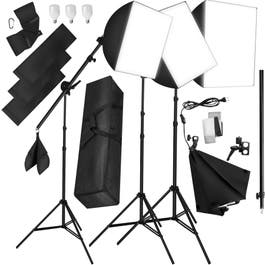Photo studio accessories for professional and part-time photographers
Do you love taking photos? Is your photography equipment the apple of your eye? Are your friends always asking you to take their pictures? Then it’s time to consider your own photo studio. With the right accessories, you can do even more with your pictures - and who knows; maybe you’ve got the talent to become a professional?!
Choosing the right photo studio background
Once you’ve found somewhere to house your photography studio, you should install a suitable background system. This is a large photography canvas mounted to the wall or ceiling. If you want to film in front of a neutral background, you should consider a bluescreen or greenscreen. You can then add in a new artificial background using the chroma key process.
Perfectly lit thanks to professional studio lighting
To really make the most of your motif, you’ll need the right studio lights in your photography studio. Professionals mostly use light from artificial lights, such as a flash. As you can’t control how a flash distributes light around the room, reflectors are used that direct the light around the space. This affects both the harshness of the light and the fall of shadow. The most popular varieties of studio lighting include the softbox, as well as standard reflectors. Softboxes are soft cases suspended on a framework. They are easy to assemble, disassemble and transport. The softbox ensures soft light thanks to its large surface area. Taking out the diffusor can individually adjust the harshness of light.






